At the Arrowhead EMS conference in Duluth, Minn., I joined paramedics and EMTs from across the state and northern Wisconsin seeking out EMS products that aim to improve provider safety, patient care, and EMS operations. Several products caught my attention and I was able to learn more about those products from representatives at the show.
1. UCapIt: Better dispense supplies and medications
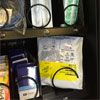 The UCapIt Controlled Access Pharmaceutical Dispenser was the most prominent item in the BoundTree Medical booth. Although we shared a good laugh about the frequency with which exam gloves need to be restocked during deer hunting season at EMS agencies in the north country, the careful and intentional distribution of medical supplies, along with medications, is important for agencies of any size.
The UCapIt Controlled Access Pharmaceutical Dispenser was the most prominent item in the BoundTree Medical booth. Although we shared a good laugh about the frequency with which exam gloves need to be restocked during deer hunting season at EMS agencies in the north country, the careful and intentional distribution of medical supplies, along with medications, is important for agencies of any size.
With the UCapIt, supplies from the mundane, like gauze pads, to the controlled, like narcotic medications, can be securely dispensed. Two-person authentication can be programmed for specific items. All dispensing information is electronically reported so managers know when restocking is necessary and for monitoring usage. Learn more about the UCapIt Controlled Access Pharmaceutical Dispensers.
2. Airspace CO monitor: Always on
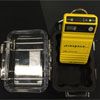 A call for “sick person” or “flu-like symptoms” could be caused by many things, including carbon monoxide (CO). The odorless, invisible gas probably is the cause of more illnesses than we realize and a danger to EMS providers unless we are monitoring for it on every call.
A call for “sick person” or “flu-like symptoms” could be caused by many things, including carbon monoxide (CO). The odorless, invisible gas probably is the cause of more illnesses than we realize and a danger to EMS providers unless we are monitoring for it on every call.
The Airspace CO monitor, assembled in Wisconsin, is portable, easy-to-use, and gives audio and visual alarms. Attach the compact CO monitor to the jump bag (first-in kit) to make it part of every patient contact. Learn more about the Airspace monitoring systems.
3. EMMA capnograph: Real-time and accurate ventilation monitoring
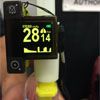 The EMMA capnograph is a neat little bit of whiz bang that packages big waveform capno monitoring features in a finger-sized package. By now we should know the importance of capnography, but we continue to hear stories about missed intubations or patients that were poorly ventilated because capnography was not utilized. EMMA, easily attachable to an airway, quickly generates a high quality and viewable waveform where you are looking – at the BVM and airway.
The EMMA capnograph is a neat little bit of whiz bang that packages big waveform capno monitoring features in a finger-sized package. By now we should know the importance of capnography, but we continue to hear stories about missed intubations or patients that were poorly ventilated because capnography was not utilized. EMMA, easily attachable to an airway, quickly generates a high quality and viewable waveform where you are looking – at the BVM and airway.
When the Moore Medical rep exhaled into a KingLT with an EMMA attached, I was impressed at how quickly the capno waveform appeared and how easy it was for me to view the normal waveform. Learn more about the EMMA Mainstream Capnometer.
4. Whelen V23 V-Series lights: Don’t take changes on roadside visibility
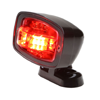 I’ll be honest. At most EMS tradeshows, I make a wide pass around the pulsing, bright lights that many vendors display for emergency vehicles. Squinting through my fingers, I tentatively approached the Whelen lighting booth because day or night I am committed to making the roadside, one of the most dangerous EMS work environments, safer for all responders and reducing the risk of secondary collisions.
I’ll be honest. At most EMS tradeshows, I make a wide pass around the pulsing, bright lights that many vendors display for emergency vehicles. Squinting through my fingers, I tentatively approached the Whelen lighting booth because day or night I am committed to making the roadside, one of the most dangerous EMS work environments, safer for all responders and reducing the risk of secondary collisions.
I’m glad I braved my photophobia to learn about recent enhancements in warning lightheads for ambulances and other emergency vehicles. Almost all lighting for new vehicles or being retrofitted to existing vehicles uses LED technology. Of special interest to me were lights in the V23 V-Series that offer 3-in-1 combination lighting with 180 degree wide-angle visibility. These multi-function lights provide warning notification when activated, as well as flood lighting when programmed, to the opening of a door or compartment. Combination lights also mean fewer lights need to be mounted on the ambulance and a cleaner overall look for the vehicle. Learn more about V23 V-Series and other Whelan warning lightheads.
5. Ferno x-frame cot: Now in production
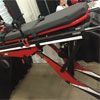 First quietly, and then publicly, Ferno has been demonstrating prototypes of its INX patient cot, which is a component in the Ferno Integrated Patient Transport and Loading System. The innovative cot is now in production at FERNOs Ohio manufacturing facility.
First quietly, and then publicly, Ferno has been demonstrating prototypes of its INX patient cot, which is a component in the Ferno Integrated Patient Transport and Loading System. The innovative cot is now in production at FERNOs Ohio manufacturing facility.
The new cot is designed to be part of an integrated system and complicate the use of a stair chair, like the Ferno PowerTraxx, to extricate a patient from their house or 3rd story apartment. Experienced providers have long known that the stair chair is the optimal tool for moving patients from difficult-to-reach locations and the cot, regardless of its weight, is not well-suited for lifting or carrying over any distance or obstacle.
Each time I caught a glimpse of the Ferno, booth attendees were gathering around for demonstrations of how the INX cot eliminates lifting patients. Learn more about the Ferno EMS integrated patient transport and loading system.












